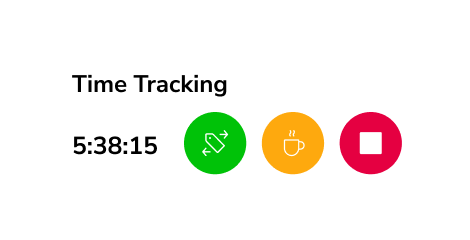If you’ve ever found yourself drowning in an endless to-do list, jumping from one task to another without making progress, you’re not alone. Productivity can often feel like a game of whack-a-mole – just as you finish one task, another pops up.
What if there was a solution?
First developed to save a failing, unproductive steel factory over 100 years ago, the Ivy Lee method is a productivity tool designed to help place focus on important tasks first and eliminate the distraction of trying to do everything at once.
This Article Covers:
- What is the Ivy Lee Method?
- The Origins of the Ivy Lee Method
- Benefits of the Ivy Lee Method
- How to Apply the Ivy Lee Method in Your Life
- Flexibility of the Ivy Lee Method
- Final Thoughts
What is the Ivy Lee Method?
The Ivy Lee method, named after its creator, was designed to address a common challenge in productivity: knowing where to focus your attention. The method offers a structured approach to help you regain control of your day and ensure you’re working on what’s most important.
The technique is profoundly simple. At the end of each workday, write down the six most important tasks you need to complete the following day, ranked in order of priority. When the next day begins, start with the first task and work on it until completion before moving on to the next, avoiding multitasking and distractions.
Focus exclusively on one task at a time, avoiding the temptation of skipping ahead to the next task before the previous one is completed, or dealing with more than one task simultaneously.
The method enforces discipline by determining what tasks should be done, and in what order, ensuring that you focus and prioritize work.
-

(unsplash.com)
The Origins of the Ivy Lee Method
The origins of the Ivy Lee method starts in 1918, when Charles M. Schwab, the president of Bethlehem Steel Corporation, was looking for ways to enhance efficiency within his company. Despite being one of the most successful businessmen of his time, Schwab knew that his team where not working to the best of their abilities.
As his concerns grew, Schwab invited Ivy Ledbetter Lee, who was a respected productivity consultant and public relations expert at the time. Schwab asked Lee to meet with him and his executives, asking for a strategy that could help them get more done in less time.
Instead of offering a long-winded lecture or complex system, Lee proposed a simple technique: at the end of each workday, employees should write down the six most important tasks they needed to complete the following day, prioritize them, and work through them one at a time. Any unfinished tasks would roll over to the next day’s list.
Schwab was intrigued, but he wanted proof that the method worked. Lee suggested they try it for a few months, free of charge. Instead of demanding payment upfront, he told Schwab to pay him whatever he thought the method was worth after seeing the results.
Within three months, Schwab and his executives noticed a significant productivity improvement. So much so, Schwab wrote Lee a check for $25,000 – a significant sum at the time, equivalent to hundreds of thousands of dollars today.
The method soon spread, becoming a trusted productivity tool for business leaders and professionals around the world.
Benefits of the Ivy Lee Method
Understanding why you should do something is the first step to implementing it. The Ivy Lee method has numerous benefits to help improve productivity. Let’s explore a few:
- Decision Fatigue and Mental Clarity: A powerful feature of the Ivy Lee method is how it tackles decision fatigue. Our brains have a limited amount of cognitive resources, and each decision we make throughout the day drains some of that energy. This simple strategy frees up your cognitive energy, allowing you to focus entirely on the tasks at hand rather than wasting mental resources on figuring out your next move. This way, you enter the workday with clarity and purpose, and your mental energy can be better spent on executing, not deciding.
- A Sense of Accomplishment and Motivation: The Ivy Lee Method fosters motivation by turning productivity into a series of small, achievable wins. Instead of feeling overwhelmed by an endless to-do list, you focus on six key tasks, making progress more visible and attainable. Completing each task provides a sense of accomplishment, reinforcing momentum and keeping you motivated to tackle the next challenge.
- Discipline Your Brain: Our brains are not designed to handle multiple complex tasks simultaneously. Instead, we perform at our best when we can focus on a single task at a time. With this method, rather than multitasking, you concentrate fully on one task at a time. This deep focus forces us to discipline ourselves, a skill which if developed over time, can spill into other areas of our lives, such as health, fitness, and work.
-

(unsplash.com)
How to Apply the Ivy Lee Method in Your Life
Getting started with the Ivy Lee method is simple, but the key is consistency. The method works best when you make it a habit, so don’t overcomplicate it – just start. Here’s a step-by-step guide to implementing it in a way that feels natural and easy to stick with.
#1 Plan Your Six Tasks the Day Before
Before ending your day, take five minutes to list the six most important things you need to accomplish tomorrow. Use a notebook, planner, or a notes app – whatever suits your style best.
#2 Rank Tasks by Importance
Prioritize your list from most to least important. The first task should have the biggest impact on your goals.
Example: If a critical work deadline is looming, “Process monthly payroll” goes at the top. Less urgent tasks can go lower on the list. Your list might look like this:
- Task 1: Process monthly payroll.
- Task 2: Chase development team for updates on new product.
- Task 3: Update team on progress.
- Task 4: Reply to outstanding emails.
- Task 5: Prepare week-end meeting agenda.
- Task 6: Research new marketing ideas.
#3 Focus on One Task at a Time
Start your day with Task #1 and don’t move to the next until it’s finished. Avoid multitasking – it slows you down and reduces focus.
#4 Carry Over Unfinished Tasks
If you don’t complete all six tasks, move the remaining ones to tomorrow’s list. If something keeps getting pushed back, decide if it’s truly important or if it should be delegated or removed.
#5 Stay Consistent and Adjust as Needed
Some days will be smooth, others will be chaotic. The key is making this method a habit. Over time, you’ll get better at prioritizing what really matters and staying focused on what moves you forward.
After a few weeks, reflect on what’s working and what’s not. Are you consistently completing tasks? Are you feeling less overwhelmed? Use these insights to refine your approach.

(unsplash.com)
Flexibility of the Ivy Lee Method
I know what you’re thinking: “That’s all fine and well in theory, but do you know how many plates I’m spinning?”. Yes, the Ivy Lee method thrives in structured environments, but what if your job is unpredictable?
What if you’re a business owner juggling client calls, unexpected issues, and administrative work, or a customer service rep constantly shifting between urgent tickets? In these fast-paced roles, sticking to a rigid six-task list might seem impossible – but the core principle of prioritization still applies, and can still help you improve productivity:
- Adaptable Task List: Feel free to adapt if you need to. Instead of locking in six fixed tasks, start with a prioritized list but leave room for adjustments. For example, a business owner might set “follow up with three key clients” as a task, knowing the specific clients may change based on urgency. This keeps you focused without feeling boxed in.
- Task Grouping for Efficiency: Rather than listing six separate tasks, group them by category – like “client communication,” “team management,” or “administrative work.” A project manager, for instance, can prioritize team check-ins over emails while keeping flexibility for urgent issues.
- Time Blocking for Focus: If your day is constantly shifting, use time blocking for priority work. A doctor handling patient appointments might reserve the first two hours for paperwork, ensuring essential tasks are completed before the day gets chaotic.
- Daily Review for Adaptability: Take five minutes at the end of the day to reflect – what worked, what didn’t, and what needs adjusting? A freelancer might notice they keep pushing a task forward, signaling it should either be scheduled earlier or delegated.
Even in unpredictable roles, a quick prioritization habit ensures you stay on top of what truly matters instead of getting lost in daily chaos.
Final Thoughts
The Ivy Lee Method isn’t about cramming more into your day – it’s about making each day count. In a world drowning in to-do lists and distractions, this method brings clarity by forcing you to focus on what truly moves the needle.
By narrowing your daily priorities to six essential tasks, you cut through mental clutter, reduce wasted effort, and work with sharper intent. No elaborate systems, no endless planning – just a simple habit that keeps you in control.
Why not give it a try? Write down six tasks for tomorrow, tackle them one by one, and see how it impacts your productivity. Less chaos, more progress – that’s the Ivy Lee way.





